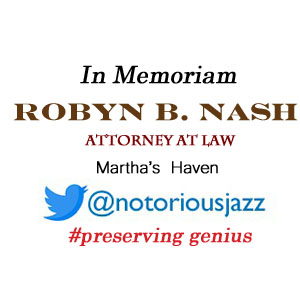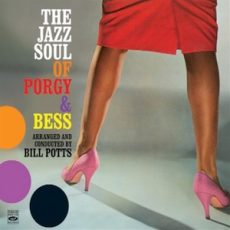
Daily Dose Of Jazz…
William Orie Potts was born April 3, 1928 in Arlington, Virginia. As a child he played Hawaiian slide-lap steel guitar and the accordion in his teens. At 15 he won an accordion competition with a performance of Twilight Time. After hearing Count Basie on the radio he started studying the piano in high school. He went on to attend Catholic University of America in 1946–1947, then formed his own group under the name Bill Parks, which toured in Massachusetts and Florida.
While serving in the Army from 1949 to 1955 he transcribed charts for Army bands. During this time Bill composed and arranged for Joe Timer and Willis Conover’s ensemble, The Orchestra, which was broadcasted on Voice of America radio. He wrote four of the songs on The Orchestra’s 1954 Brunswick Records LP, and recorded some of their live shows, which occasionally featured guest appearances from Charlie Parker and Dizzy Gillespie.
By 1956 he was leading a house band at Olivia Davis’ Patio Lounge in Washington, D.C. and Lester Young booked an engagement there. Potts convinced Young to record with him on two of the evenings. These recordings were later released as the Lester Young in Washington, D.C. sessions.
The following year he worked extensively as a composer, arranger, and performer for Freddy Merkle’s Jazz Under the Dome album which featured Earl and Rob Swope. Soon after this he suffered a crushed vertebra in a car crash and ended up in a body cast for three months. During his recuperation Bill began working on charts and arrangements for an album consisting of jazz reinterpretations of many songs from George Gershwin’s opera Porgy & Bess.
Fully recovered by 1959, he released a session under his own name titled The Jazz Soul of Porgy and Bess for United Artists Records. It featured a nineteen-piece band whose members included Al Cohn, Harry Edison, Art Farmer, Bill Evans, Bob Brookmeyer, Marky Markowitz, Zoot Sims, Charlie Shavers, Earl Swope, and Phil Woods. The album received a five out of five star rating from Down Beat magazine upon its release.
Following this, Potts spent several years working in New York City before returning to the D.C. area, where he worked locally in addition to touring with and/or arranging for Paul Anka, Eddie Fisher, Ella Fitzgerald, Stan Getz, Woody Herman, Quincy Jones, Stan Kenton, Ralph Marterie, Buddy Rich, Jeri Southern, Clark Terry, and Bobby Vinton.
In 1967 he released an album on Decca Records, How Insensitive, with a studio group called Brasilia Nueve. This group included Markowitz and Sims from the Porgy and Bess session , as well as Tito Puente, Chino Pozo, Mel Lewis, Barry Galbraith, and Louie Ramirez.
As an educator Bill taught music theory at Montgomery College from 1974 to 1990 and was the leader of the student jazz band. He also led a big band for occasional performances at Washington’s Blues Alley nightclub in the 1980s.
Retiring to Fort Lauderdale, Florida in 1995, pianist and arranger Bill Potts died of cardiac arrest on February 16, 2005 in Plantation, Florida.
More Posts: arranger,bandleader,history,instrumental,jazz,music,piano
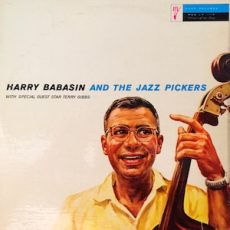
Daily Dose Of Jazz…
Yervant Harry Babasin, Jr. was born on March 19, 1921 in Dallas, Texas to American/Armenian parents. He attended North Texas State University, one of many noted jazz alumni from the school. Among them were Jimmy Giuffre, with whom he played in Bill Ware’s orchestra around 1940, and Herb Ellis, who played with him in the Charlie Fisk Orchestra starting in 1942. Fisk actually fired his rhythm section after hearing Ellis and Babasin play, and after he was admitted, Babasin quit school to go on tour with Fisk.
He toured in the 1940s with Jimmy Joy, Bob Strong, Billie Rogers, Gene Krupa, Charlie Barnet, Boyd Raeburn, Benny Goodman, Woody Herman, Frank DeVol, and Jerry Gray. He also appeared in A Song Is Born, one of many jazz stars to play roles in the film. On the film set he met guitarist Laurindo Almeida, and the two began jamming together. Along with Roy Harte and Bud Shank their quartet was an early experiment blending Brazilian music and jazz. Their 1954 ten inch discs are predecessors to the bossa nova explosion of the late 1950s and early 1960s.
1947 saw him recording the first cello solos known in jazz music, with the Dodo Marmarosa Trio. In order to do so, he tuned his strings in fourths. In later cello ensembles he added a bass player. He and Oscar Pettiford did a session together with two cellos. In the mid-1950s, he put together his own ensemble, Harry Babasin & the Jazzpickers. This ensemble released three albums and played regularly at the Purple Onion in Hollywood, California. One recording of note was made in 1952 at the Tradewinds nightclub in Inglewood. It features Charlie Parker, Chet Baker, Sonny Criss, Al Haig, Larance Marable, and Harry, in one of Bird’s few West Coast appearances.
His career cooled in the 1960s, returning to work with Charlie Barnet and supporting Bob Hope’s USO tours. In the 1970s he and Harte initiated the Los Angeles Theaseum, a jazz archive and preservation society. Harry gave his last tour in 1985 with John Banister on piano. Over the course of his career he was possibly a part of as many as 1,500 recordings.
Bassist Harry Babasin, nicknamed The Bear, died of emphysema in Los Angeles, California on May 21, 1988.
More Posts: bandleader,bass,history,instrumental,jazz,music
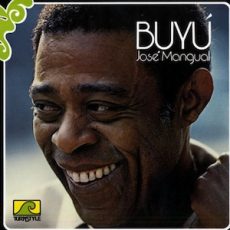
Daily Dose Of Jazz…
Jose Mangual Sr. was born on March 18, 1924 in Juana Diaz, Puerto Rico. He began playing percussion at the age of ten and by 1938 moved to New York at the age of 14. In 1952 he began playing timbales and percussion for Machito’s Orchestra.
In the 1950s Mangual played with the godfather of modern-day salsa Arsenio Rodriguez and with Latin jazz pioneer Cal Tjader. Then he joined Erroll Gardner’s band with whom he traveled the world, playing jazz for international audiences. During this time he performed and recorded with Cannonball Adderley, Sarah Vaughn, Herbie Mann. and appeared on Count Basie’s April in Paris, Miles Davis’ Sketches of Spain, Dizzy Gillespie’s Talkin’ Verve, Tito Puente’s Babarabatiri, Willie Bobo’s Spanish Grease, Gato Barbieri’s Viva Emiliano Zapata, as well as on multiple Charlie Parker’s compilations.
He has also performed with Dexter Gordon, Carmen McRae, Jorge Dalto, Stan Getz, Louis Jordan, Ray Charles, Tito Rodriguez, Xavier Cugat, Tito Puente and Chano Pozo.
In the 1970s, Mangual recorded two instructional albums Buyú and José Mangual* & Carlos “Patato” Valdez* – Understanding Latin Rhythms Vol. 1 with Carlos “Patato” Valdez for the drum maker Latin Percussion.
In 1986 he co-wrote and recorded Los Mangual – Una Dinastia with his sons Jose, Jr. and Luis Mangual. In 2001 he was posthumously inducted into the International Latin Music Hall of Fame.
Percussionist Jose Mangual Sr., world renowned for his bongo drum performances and recordings during the 1940s and 1950s, died on September 4, 1998 in New York City.
More Posts: bongos,history,instrumental,jazz,music,percussion
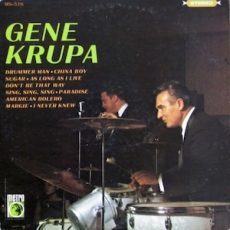
Daily Dose Of Jazz…
Eddie Wasserman was born on March 5, 1923 in Smackover, Arkansas. Growing up he had played the saxophone with many black kids in the neighborhood. After his father died, he moved with his mother to Tyler, Texas and it’s where he fell in love with jazz. His first paid job was in a dance band at age 14.
At the onset of World War II in 1941, Wasserman attended New York’s Juilliard School for a couple of years but he was soon drafted and wasn’t discharged until 1946. He returned to Juilliard to complete his studies and graduated in 1948, and that’s when he started playing with Benny Goodman. In addition to playing with Goodman, he was in big-band live and studio recordings led by Artie Shaw, Manny Albam, Stan Kenton, Louie Bellson and Chico O’Farrell, with whom he co-led a big band in 1953.
By 1955, big band work was beginning to dry up on the East Coast was starting to dry up. On the request of an agent O’Farrell and Wasserman formed a small group to play Latin music in Miami Beach, Florida. Not a good experience but Eddie’s late-1950s quartet recordings with Gene Krupa were great recordings.
Given that the youth-culture explosion in 1966 was changing the face of music, jazz was no longer an ideal way for him to earn a living. So giving up the road and having a degree in education, he became an assistant director of the concert band at Clifton High School in New Jersey. He continued to play club dates and find work in Broadway pit bands.
Saxophonist, clarinetist and flutist Eddie Wasserman died after suffering a heart attack on May 27, 1992. He was 69.
More Posts: bandleader,clarinet,flute,history,instrumental,jazz,music,saxophone
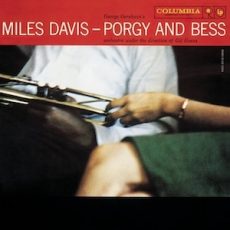
Daily Dose Of Jazz…
Cal Lampley was born on March 4, 1924 in Dunn, North Carolina as the second child of Hettie Marina and William Lorenzo Lampley. He graduated with a B.S. from North Carolina Agricultural and Technical State University in Greensboro, North Carolina. His first known music contribution was as an organist of the Chapel Hill Presbyterian Church.
A move to New York City in 1946 had him continuing his education at the Juilliard School of Music. With an Artist Diploma in 1949 in piano he debuted his performance as a pianist at the Carnegie Hall concert in 1950.
He became a tape editor at Columbia Records. During Lampley’s nine-year stint with Columbia, he rose to the position of Recording Director of the Popular Albums Department. He was later hired by record producer George Avakian to work as an A&R and as a record producer for music labels such as Columbia, Warner Bros., RCA/Victor, and Prestige. He worked with artists including Miles Davis, Mahalia Jackson, Dave Brubeck, Art Blakey, Leonard Bernstein, Freddie McCoy and Louis Armstrong.
Lampley’s other collaborations were with classical, jazz and pop musicians such as Nina Simone, Robert Casadesus, Zino Francescatti, Guiomar Novaes, Johnny Mathis, Genevieve, Victor Borge, Carmel Quinn, Arthur Godfrey, Tab Hunter, Bill Haley, Lonnie Sattin, and Chico Hamilton.
His own version of the composition “Misty” by jazz musician Richard “Groove” Holmes was Prestige’s Records biggest single in its entire history, peaking at #44 on the Billboard charts in 1966. In tribute to his musical contribution to the city and the state, Mayor Kurt L. Schmoke officially promulgated the “Cal Lampley Day” on May 1, 1994 in Baltimore at a City Hall ceremony.
On July 6, 2006 composer and record producer Cal Lampley in Baltimore, Maryland from complications of multiple sclerosis.
More Posts: composer,history,instrumental,jazz,music,record producer


